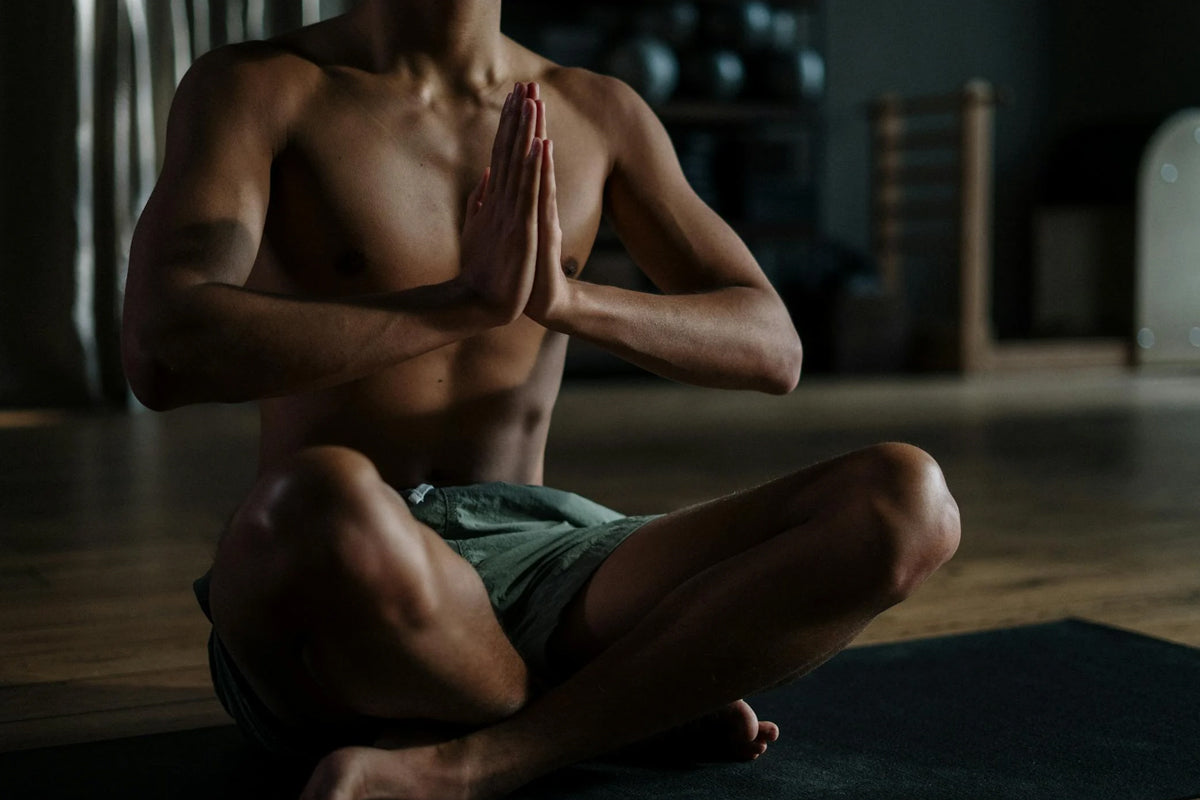Can Meditation Help My Performance? An Overview

Can learning to meditate really help my athletic performance? Yes, but ‘working’ at meditation can be a liability, not a feature. Let me explain. First, let’s back up and discuss why working hard in endurance sports matters. In general, we know hard work is rewarded and that reward, in the fairest conditions, will be commensurate with the work. This is foundational to the way we Americans think, bolded are these lines in the contract we carry as citizens. You work hard, you get rewarded. I draw this out because, for many of us, this idea is so ingrained we don’t inspect or question it. This ‘work’ ethic is especially valued in endurance sports where commitment to goals is valorized. We create exacting training plans, nutrition regimes, and often live around our athletic pursuits. The more we commit, the more we get; that’s the deal. In the realm of sport, this isn’t foolish, it really does produce results (and the rewards). Point blank, you can’t bring this kind of work ethic to meditation. The harder you work, the more you try, the further you get away from the reward. Meditation is the art of doing nothing and to successfully ‘do’ nothing, your work ethic and your expectation of reward must be placed at the door. This is a different game with different rules. So buckle-up, we’re going deep.
The Default Mode Network and You
Simply put, regular meditation changes the structure of your brain. The result is neural rivers flow through different regions and create a different sense of reality and priority. It’s not scary, or weird, or mystical or anything like that. It’s how you feel when you are really engaged, really connected with whatever you’re doing. When you’re not looking over your own shoulder, inspecting or judging, but fully doing. You move in and out of this state constantly, probably without noticing. The region of your brain creating this self-reference, the ruminations of the past and projections of the future is called the ‘Default Mode Network’. When the DMN is highly active, your mind is chattering, conversing with itself, and often regretting (past) or worrying (future). This self-talk, or ceaseless chatter, can be destructive. Inspect the neural flows of the highly depressed and anxious, and you’ll find the DMN a raging river. The DMN is responsible for good stuff too, like self-reflection and improvement, planning and predicting, but it’s been well said that it’s a better servant than a master. For most of us, most of the time, we live within the reality the DMN dictates. On occasion, often through sport, we jump the fence of our DMN and notice how vast and beautiful this place is, and how connected we feel. Feelings of freedom and connection shape your perception when activity in your DMN is diminished. It’s meditation that allows you to reroute these flows; to ‘train’ your mind, almost like a muscle.
Embracing Discomfort and Negative Thinking
The reigning olympic marathon champion Eliud Kipchoge is a big meditator and he attributes much of his success to the states of mind he’s cultivated through meditation. As endurance athletes, we have an inordinate amount of time to ruminate, or to talk to ourselves. When you encounter setbacks (as you will) the self-talk can get negative fast. When Kipchoge encounters his negative talk, his experience meditating allows him options, a fork in the road. Either follow the negative talk to wherever it leads - with all the negative physiological ramifications - or, notice the negative talk, accept and allow it, then bring yourself back into your race. Find your breathing, or the feeling of the ground making contact with your feet, or anything that’s constant. The less experienced meditators dignify negative talk as utterly and completely real and so have no options. No fork, it’s just one way.
Benefits of Meditation
The first big step endurance athletes make as they bring their meditation practice into their racing; the recognition of the story as just a story, it’s not real. The fork begins to appear. They’ll begin to notice their negative thoughts and stop listening. Really stop listening and the chattering mind gets bored and stops showing up. An accomplished meditator like Kipchoge isn’t overcoming his demons again and again in some herculean display of strength and stamina, rather he’s trained his mind so his demons no longer bother to show. When they do, they are free to stay, but he knows everything they say is irrelevant. From the outside, people like Kipchoge (and many others) appear to demonstrate superhuman focus, concentration, and fortitude. But from the inside it’s more like a flow; they’re not ‘doing’ anything, it’s free to happen. All of the training and preparation is allowed to run unconstrained because their mind isn’t interfering. In this condition, your DMN is dimly active, there’s no one talking to you about what’s happening, and you’re completely free to be what is happening. It turns out this ‘flow state’ or ‘runner’s high’ is trainable through meditation. This isn’t just for hippies, monks, and mystics anymore; it’s for athletes striving for peak performance. The less you identify with your thoughts, the more you’ll notice peace and equanimity is always available, just like Kipchoge.
How To Meditate (A Very Brief Introduction)
As stated at the outset, there’s nothing to ‘do’ in the conventional sense. If this is your first time, just a few minutes is great. Sit comfortably and close your eyes and just notice what happens. Your chattering mind will (likely) pour in like a torrent. It’ll say, “this is stupid, what am I doing?” or “I don’t have time for this” or “I have to get that email out by 3pm” or whatever thoughtform is predisposed to grab and hold your attention. If you identify with the thought, there will be no room between you and it. No fork. Remember this represents neural flows in your brain, and DMN the currents are rushing. It’s here where you do the ‘work’ of meditation. Notice your thoughts (what it is doesn’t matter) and return back to something constant and present moment. Most people use the buzz of their body, or the regularity of their breathing. Don’t fight your thoughts, don’t ‘work’ at it, there’s nothing to ‘do.’ Getting mad about being captured by thought (when you notice) is just another thought. No one can stop this, even Kipchoge. Just notice them and return to your constant. You don’t eliminate thoughts (as some imagine) but you eliminate identification to the thoughts. And when you no longer identify with your thoughts, you begin to return from the looking glass, realizing how often you live in a fictional and bizarre world of self-talk.
Conclusion
The hard work of endurance athletics is required if we’re going to get better. A structured training program, balanced nutrition, supplementation, and intentional rest are still the hallmarks of what we do and for good reason. But when it comes to the mind, we can’t apply the same rigors of hard work. We have to let the mind be as it is. Without this ability to recognize your thoughts as thoughts, you’re captured and led around by them. A meditation practice presents you options where before there were none; believe the fictions of self-talk or come back into the real world. We love endurance sports because, in their peak moments, they connect us to this world in a profound way. We figured out a way to suppress the activity in our DMN through sport (whether we knew it or not). Now it’s time to take it to the next level. By training yourself to notice the mechanics of your mind, not only can you find more peace and well-being in the grip of pain in endurance sports, but also in good old regular life as well.
Take the next step in your training regimen: Try any BRL Sports supplement risk-free! If our natural nutritional products aren’t the best you’ve ever used, simply return your purchase for a 100% refund — no questions asked!
Also in Inspiration & Perspiration

What Is EPO and Why Does it Have a Bad Rap?
EPO fuels red blood cells and endurance. Learn natural ways to boost it for stamina, strength, and recovery, while supplementing with EPO Boost by BRL Sports.

What Causes Cramps? (And How to Keep Them at Bay)
From dehydration to fatigue, cramps have many causes—here’s how to prevent them and power through pain-free.

Are All Sugars Created Equal? A Guide for Athletes
Not all sugars fuel you the same. From maple syrup to maltodextrin, learn which sugars boost endurance and what to consider when choosing.


